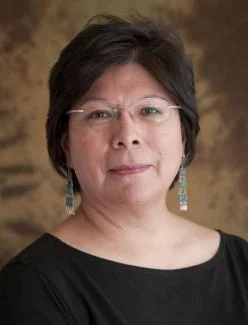
The United Nations recognizes 2019 as the International Year of Indigenous Languages, bringing world attention to the critical importance of maintaining and revitalizing Indigenous languages. Today, of the 7,000 languages spoken worldwide, close to 2,680 languages are in danger of disappearing altogether. Throughout the world, Indigenous Peoples are working vigorously to reclaim and revitalize their languages, which are essential in maintaining their cultures. Indigenous languages intrinsically carry unique systems of knowledge and ways of knowing and understanding our relationships, responsibilities, and place in the world; our languages are sacred living expressions of creative thought and power. In this issue of the CSQ, we highlight the incredible work of a few of the many Indigenous language activists who have dedicated their lives to revitalizing their mother tongues.
Focusing on transmission of language with youth and children who will become the language carriers into the future, Halay Turning Heart (Yuchi) writes about the Yuchi House and their efforts with the remaining fluent Elders to develop new young speakers of Yuchi through immersion methodologies. She proudly declares, “We have reached a pivotal point in the life of our language: for the first time in nearly a century, a new group of children are speaking Yuchi as a mother tongue.” In Massachusetts, the Wôpanâak Language Reclamation Project that began in 1993 now operates a full time Montessori language immersion school. Wôpanâak is the first American Indian language reclaimed with no living speakers for many generations. Elder Dawn Blake Souza (Assonet Band Wampanoag) says, “The success of Mukayuhsak Weekuw (The Children’s House) has given me a profound sense of peace in knowing that our future generations will have one thing that I was lacking as a child—the irreplaceable connection between our Native language and our culture.”
Other individuals and communities are using innovation to make their languages relevant to youth through media as varied as fashion, music, and video games. Melvin Songwe Shuye writes about the need “to develop Indigenous sign languages so as to be able to transmit cultural values to the hearing and speech impaired, and other persons with disabilities” in an article highlighting efforts to make the Limbum language more accessible in Cameroon.
Elsewhere in the issue, Sócrates Vásquez Garcia (Ayuuk) highlights the importance of broadcast media,specifically community radio, in maintaining Indigenous languages by “. . . speaking our languages and naming things from our perspectives and our visions, who we were, who we are, and who we want to be as a people. Radio is an ideal tool for our peoples, whose cultures are very much based in oral traditions.”
Ultimately, as Richard Grounds (Yuchi) reminds us, “The celebration of Indigenous languages on a global stage should not be allowed to obscure a clear picture of the extreme challenges for Indigenous Peoples and their languages. There can be no greater threat to the existence of a people than the eradication of their language . . . more than 2,000 Indigenous languages are critically endangered with less than 1,000 speakers remaining. Therefore, the vigor of the language among the youth is the most critical indicator for the cultural health and political sovereignty of Indigenous Nations.”
Indigenous language movements are about our sovereignty and self-determination and a process of decolonization. Cultural Survival supports language revitalization efforts that assure language continuation in Indigenous communities where native languages remain strong.
In Solidarity,
Suzanne Benally, Executive Director
(Navajo and Santa Clara Tewa)
